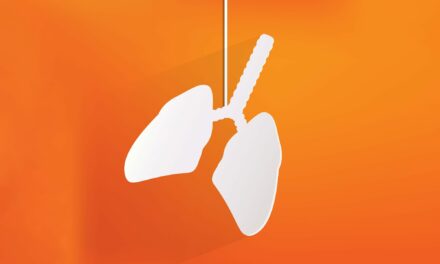Research conducted by an international consortium of 96 scientists from 63 centers in Europe and Australia discovered five genetic variants that are associated with the health of the human lung. The findings, appearing in Nature Genetics, shed new light on the molecular basis of lung diseases such as COPD and asthma. The researchers hope that drugs could target the newly discovered molecular pathways in the future.
“This work is important because until now we have known very little about the genetic factors that determine an individual’s lung function. By identifying the genes important in determining lung function, we can start to unravel the underlying mechanisms which control both lung development and lung damage. This will lead to a better understanding of diseases such as chronic obstructive pulmonary disease (COPD) and asthma. Crucially, it could open up new opportunities to manage and treat patients with lung conditions,” said the researchers.
The researchers of the SpiroMeta consortium compared genetic variants at each of 2.5 million sites across the human genome in more than 20,000 individuals of European ancestry with their lung function measures. Genetic variants resulted in alterations in lung function in five different locations in the human genome. The findings were confirmed by checking the effects of the same variants in over 33,000 additional individuals. The researchers also compared their results to those of a second consortium, CHARGE, which has published a paper in the same issue of the journal.
Lower Educational Achievement Associated with Worse Asthma Control
Research presented in BioMed Central’s open access journal Respiratory Research found that individuals with more education suffer less from asthma. The recent study found that having less than 12 years of formal schooling is associated with worse asthma symptoms.
To conduct the study, Kim Lavoie, PhD, and Simon Bacon, PhD, from the Hôpital du Sacré-Coeur de Montréal, Canada, and their team of researchers studied asthma severity in a group of 871 adult patients.
“Lower educational achievement was associated with worse asthma control, greater emergency health service use, and worse asthma self-efficacy. Patients with less than 12 years of education were 55% more likely to report an asthma-related emergency health service visit in the last year,” said the researchers.
The researchers suggest that lower education is often a marker of lower socioeconomic status generally, and that this may explain their results.
“Although this link between socioeconomic status and asthma is well established in children, this is the first study to investigate it in an adult population in Canada. It is noteworthy that patients with less education were more likely to exhibit poor health behaviors that may exacerbate asthma, including smoking and being overweight,” said Lavoie.
American College of Chest Physicians Rings in the Year of the Lung
The American College of Chest Physicians (ACCP) launched a national initiative to educate primary care providers about the diagnosis and treatment of chronic obstructive pulmonary disease (COPD) as part of the 2010 Year of the Lung celebration. Through its regional program, “COPD: What Really Works? A Best Practices Workshop for Primary Care,” the ACCP hopes to reach more than 400 primary care professionals, including family and internal medicine physicians, advanced practice nurses and nurse practitioners, and physician assistants.
“Primary care providers are the gatekeepers for our health. If they are unable to recognize the signs of COPD or high-risk individuals, the disease may remain undiagnosed and, consequently, the patient will not receive appropriate treatment,” said Kalpalatha K. Guntupalli, MD, FCCP, president of the ACCP. “By educating our primary care professionals, we give them the tools to identify high-risk patients, confirm a diagnosis of COPD, and provide initial treatment.”
According to the ACCP, the Forum of International Respiratory Societies (FIRS), a collaboration of the world’s leading professional respiratory organizations including the ACCP, established the 2010 Year of the Lung global initiative. The Year of the Lung campaign aims to raise awareness of and advocate for lung health worldwide and at the country level to reduce lung disease morbidity and mortality.
“Although respiratory conditions, such as COPD and lung cancer, significantly impact the health of our communities, they are often overshadowed by other chronic conditions,” said Guntupalli. “By dedicating an entire year to the celebration and education of lung health, we may finally gain public understanding of the risk factors for preventable lung diseases, as well as increased funding for treatment and research.”
The regional COPD programs will be implemented in 20 locations across the United States.
More information on this and other ACCP initiatives for 2010 can be found on the ACCP Web site www.chestnet.org.
Smoking a Single Cigarette Can Increase Arterial Stiffness
Lighting up just once can increase the stiffness of the arteries in 18 to 30 year olds by 25%, according to research presented at the Canadian Cardiovascular Congress 2009, which wrapped up yesterday. The event was cohosted by the Heart and Stroke Foundation and the Canadian Cardiovascular Society.
“Young adults aged 20-24 years have the highest smoking rate of all age groups in Canada,” reported Stella Daskalopoulou, MD, in a release describing the research. “Our results are significant because they suggest that smoking just a few cigarettes a day impacts the health of the arteries. This was revealed very clearly when these young people were placed under physical stress, such as exercise.”
The research measured the elasticity of arteries under challenge from tobacco by comparing the arterial stiffness of young adults who smoked five to six cigarettes a day to that of nonsmokers.
Arterial measurements were taken in the radial, carotid, and femoral arteries—both at rest and after exercise—using applanation tonometry. An “arterial stress test” was also used. Introduced by Daskalopoulou, an arterial stress test measures the arteries’ response to the stress of exercise, much like a cardiac stress test, according to investigators.
Initial arterial stress tests were conducted after smokers had abstained from tobacco for 12 hours; the test was repeated after they had smoked just one cigarette.
Researchers discovered that after exercise, the smokers’ arterial stiffness increased by 2.2% after they had abstained from lighting up, and, after smoking just one cigarette, it increased by 24.5%. When they were asked to chew nicotine gum instead of smoking, the arterial stiffness increased by 12.6%
There was no difference in the arterial stiffness measurements between smokers and nonsmokers at rest.
“In effect, this means that even light smoking in otherwise young healthy people can damage the arteries, compromising the ability of their bodies to cope with physical stress, such as climbing a set of stairs or running to catch a bus,” said Daskalopoulou, an internal medicine and vascular medicine specialist at McGill University Health Centre. “It seems that this compromise to respond to physical stress occurs first, before the damage of the arteries becomes evident at rest.”
William Grimm Receives American Lung Association Award
William Grimm, RRT, Regional Manager (Western US) at Electromed Inc, New Prague, Minn, has recently received the award for volunteer excellence in programs from the American Lung Association of the Southwest. Upon winning this award, Grimm stated, “I am fortunate to work for a company that allows me the time and resources to give back to the respiratory community.”
Currently, Grimm is responsible for planning, development, and recruitment of the sales team within the western United States for Electromed. He possesses an extensive sales and clinical background, which has served him well as a respiratory therapist since 1980. In addition to serving as president of the Arizona Society for Respiratory Care and vice president of the board of directors for the National Emphysema and COPD Association, Grimm currently sits on the editorial board for the COPD Digest as well as the Asthma Camp Committee for the state of Arizona. Grimm attended Kennedy Western University for HealthCare Administration as well as Maricopa Technical College for Respiratory Therapy.
Scripps Research Team Restores Cell Function in Cystic Fibrosis
A team led by Professor William Balch, Department of Cell Biology and Chemical Physiology at Scripps Research, La Jolla, Calif, has restored partial function to lung cells from patients with cystic fibrosis.
The new study—published online ahead of print in the journal Nature Chemical Biology on December 6, and performed in collaboration with a large number of cystic fibrosis investigators across the United States and Canada—showed that a compound called suberoylanilide hydroxamic acid (SAHA), currently approved by the FDA for the treatment of lymphoma, can restore approximately 28% of normal function to lung surface cells with the most common, yet severe, cystic fibrosis mutation that results in complete loss of function in homozygous patients.
Balch drew upon his work in network biology, in which he challenged current thinking and practices of the pharmaceutical industry that focuses on drugging single targets. “This traditional view limits our ability to tackle pharmacologically many complex loss-of-function sporadic and inherited diseases, which are really systems disorders,” Balch said in an announcement about the research. “These diseases have multiple steps in the biological network that must be adjusted to regain a more normal function of the compromised protein and tissue.”
In the case of the current study, Balch suspected that the endoplasmic reticulum—a compartment in the cell responsible for the synthesis of CFTR, which works to protect the body by degrading potentially dangerous abnormal proteins—could be doing its job too efficiently, eliminating mutant CFTR proteins that could still provide some function to the cell and tissue.
Rather than attempting to directly target or replace the mutant CFTR proteins present in CF patients—an approach that has so far failed—Balch and colleagues sought to adjust the cell folding to make a new environment that would work with the mutant CFTR proteins.
“By rebalancing the proteostasis program to provide a more supportive cellular environment,” said Balch, “the cells appear to treat the mutation more like a polymorphism rather than something dangerous needing to be completely eliminated.”
Balch said there is much work to do before this therapy becomes a reality, but “the results are very promising. The added degree of function conveyed by SAHA … could make a tremendous difference to patients with acute disease.”










